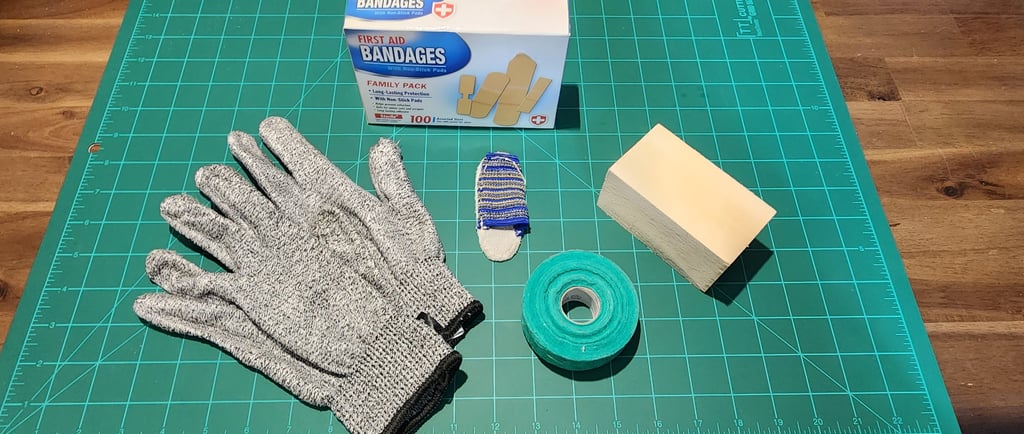Whittling 101: Carve Safely Without Injury
James Smith
10/26/20253 min read


Introduction to Safe Whittling
Introduction to Safe Whittling
You can look up the definition of “Whittling”, you’ll likely explore views and comparisons of whittling vs wood carving…but it all comes down to this…You're taking a piece of wood and turning it into a piece of art. Pretty darn cool! However, the cool factor dissipates the very second that the carving gouge plunges into your leg. It gets even worse when you get the bill from the doctor. Think about the important things in life, such as “how that emergency room co-pay could have been used to buy a nice carving knife.” In this article, we'll discuss how to carve safely, and you can enjoy your new hobby without a trip to Urgent Care. Let's get into the essential techniques and protective gear you'll need.
Essential Protective Gear for Whittling
Safety first! Personal Protective Equipment (PPE). Having the right protective equipment is necessary when you’re wood carving. Here are some must-haves for your carving tote:
Cut-resistant gloves: These gloves (ANSI A-5 and up) are designed to protect your hands from accidental cuts. They offer a great grip while allowing you to maintain dexterity when handling your carving tools. Gloves and other PPE are only good “if” you use them, so use them. Keep in mind, cut-resistant gloves are not "cut proof.” Also, anything with a point, such as a knife or gouge, can stab through them with very little resistance at all. Always practice safe knife/tool skills. If you don’t use PPE, you're carving naked. Don’t carve naked…especially in a park.
Safety glasses: Protect your peepers from pokey thingies like knives, gouges, and power tools. Safety glasses work, especially when using tools that cut or remove material. OSHA frowns on “Safety Squinting,” so wear those glasses. Put your knife down before you scratch that itch...or pick your nose.
Thumb protector- Some carvers prefer a glove on their non-dominant hand and a thumb protector on their dominant hand, while others wear gloves on both hands. Always make sure what you wear is appropriate for the job and that you use it as instructed by the manufacturer.
First aid kit: Always have a first aid kit handy, just in case of minor accidents. It’s not a question of “if” it’s going to happen, it’s a matter of “when” it’s going to happen. Having bandages and antiseptic wipes is necessary, even for small cuts.
Whittling Techniques to Avoid Injury
Now that we've covered the protective gear, let’s focus on safe whittling techniques. Beginners often overlook this, but proper technique plays a key role in minimizing injuries:
Always carve away from your body: This is probably the most important rule in whittling. Never push, pull or point sharp steel pointy thingies at your body. Don't carve towards anyone else either....especially if he is in a motorcycle gang and has a name tag that says “Beware of Larry.”
Remember this old whittler saying: "Blood stains wood."
Remember my dad’s old saying after I got hurt: “So…how’d that work out for ya?” I thought my name was "Einstein" for years.
Keep your tools sharp: Dull tools are more dangerous than sharp ones because they require more force to cut through the wood, leading to slips. Remember, “Stop and strop” during your carving session.
Practice controlled strokes: Take your time. Make short, controlled cuts rather than long sweeping motions. Look at where the knife will go and where your fingers will be. Push the knife blade with your thumb; don’t force it with all your weight. This will not only give you better control but will also minimize the chances of an accident.
Let it hit the floor: Don't try to catch a knife if you drop it. This is hard NOT to do! Yep...it's gonna fall on the tip of the blade. Yep, it will likely damage it. Why? The same reason that the bread hits the floor butter side down and a cat always lands on its feet.... it’s witchcraft. We fix the damage and move on. Why shouldn't you try to catch it? Think about it...your trying to pay catch with a pointy razor blade...nothing good can possibly come out of this. If you're Freddy McFumble Fingers, put a rubber mat under your feet where you carve (aka---the place where you drop your tools).
By following these best practices, you'll be well on your way to wound-free whittling. Any injury should be a “self-correcting error.” Remember, the goal is to enjoy carving without carving yourself.
Conclusion
Whittling is a great hobby, especially when done safely. Being safe is cheaper than a visit to the ER. You cant carve with stitches. Put the glove on and let the chips fall where they may.
Follow
“By using this site, you agree to our Privacy Policy and Terms & Conditions.”
© 2025. All rights reserved.
